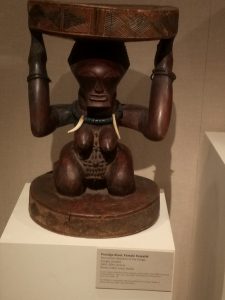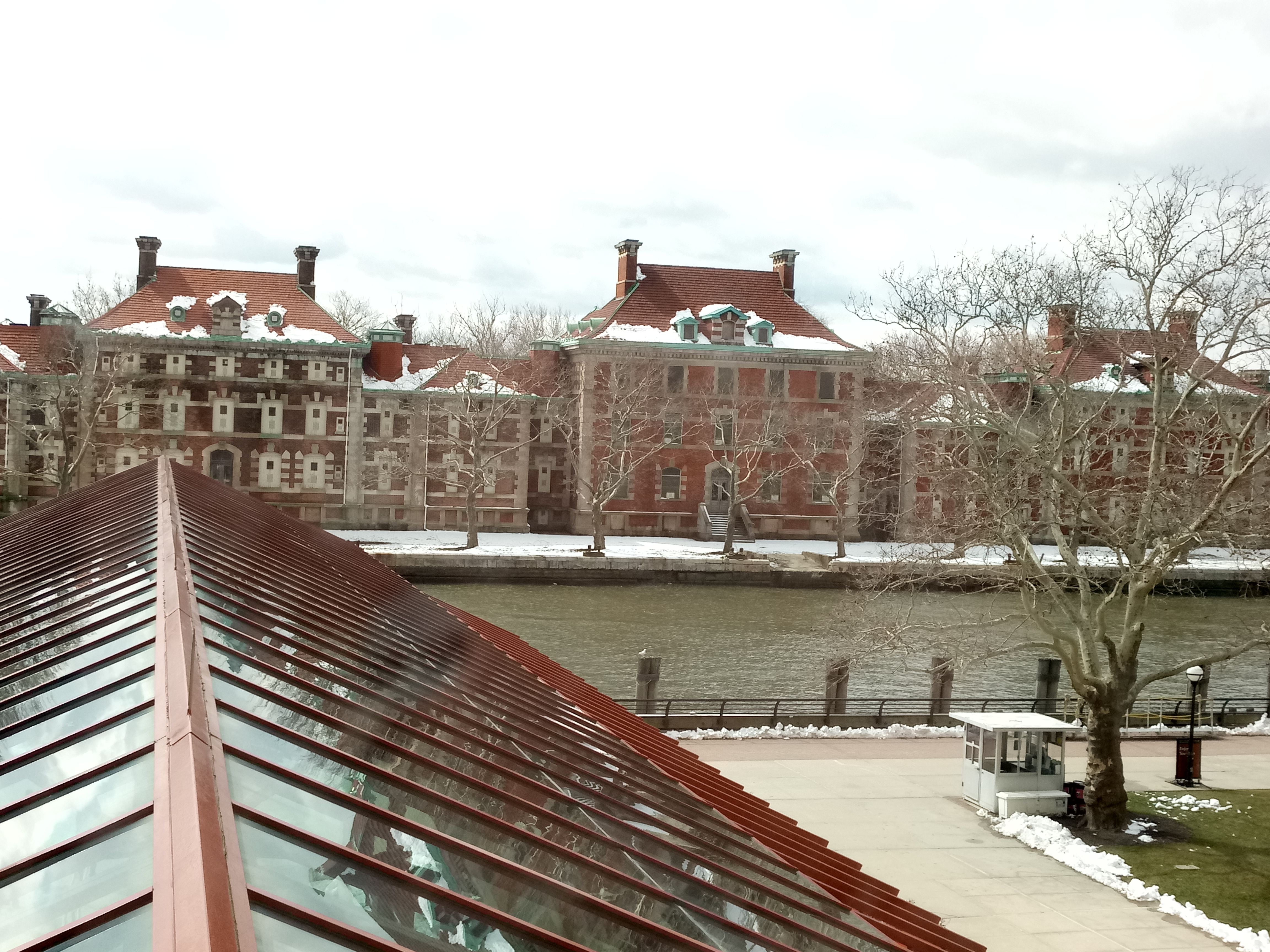{Authors note; We were asked to discuss the visual essays on different projects that the artists presented on their works or the works they represent at the MET}
The visual essay about the ideal woman was of particular interest to me as I wanted to learn what the artist’s notion of an ideal woman is. Growing up seeing how the social media and various industries describe the ideal woman to be tall, skinny, beautiful with flawless skin and long legs. This woman should also have a beauty that does not fade, impress a lot of followers and show so much skin. The notion of an ideal woman is very biased in the advertisement industry as it tends to exclude those women in the society who do not fit that idea. The idea is also somehow unrealistic as no one is ever that perfect or does not grow old and stays beautiful forever. Joseph Loh explains that there is no fixed definition of an ideal woman as she can be different things, from a silent dancer, a powerful intellectual and well-read artist. He explains how he loves the painting of the Chinese dancer as it reflects the notion of eternity which provides comfort and solace to him in the afterlife. From my perspective, his view of the Chinese painting can be to how some people end up looking for comfort in the simple things in life in order to find peace with themselves.
His explanation of the Queen Victoria painting shows how his view of an ideal woman to be one who is beautiful and full of grace even after been through some tragic events. In this case, he shows us how people view Queen Victoria as a plump old lady who always wears black clothes. This is an image that everyone has of the Queen forgetting that she had her own life full of happiness and many amazing things in her life before her husband died. In my view, this also shows how an example of an ideal woman whose beauty fades but still stays powerful and graceful. This makes me understand that an ideal woman does not only have to be beautiful but she can have a lot of other things going on in her life.
Joseph Loh’s shows us how the painting of Princesse de Brogille can be considered an ideal woman not only due to her beauty and elegance but because of the emotions this painting portrays to the husband. The husband would hide this painting under curtains and look at it himself not allowing anyone else to look at it.
Lastly, I was touched by his final presentation about his mother’s painting which showed so many emotions of love, tenderness, and tiredness. In most of the images we see in the media, we see women in perfect angles, always smiling and looking content but this is not the case in our everyday life. In the painting of the mother, we see how his mother is tired probably from working all day or due to old age but the beauty in her is still captured and still attracts someone’s attention. I also love his explanation about whose sleeves which embodies what an ideal woman is without showing her. This is the most powerful way to portray a message as to me it helps me understand that there is no fixed image of an ideal woman but things she is made up of which includes the clothes she wears daily or the objects she uses. This eliminates discrimination and includes women from different cultures to consider themselves ideal women.
AFRICA-Alisa LaGamma
The visual essay presented by Alisa LaGamma called Africa was interesting to me as she explained how her connection with Africa influenced her to develop her expertise in African art. One thing I noticed is that all the places she says the art in the collection came from where from regions with a rich history, tradition, culture and very diverse. I am from Tanzania, therefore, I feel connected to the sculptures presented in the museum as I am used to seeing artists carving them back home but I just did not know the significance it plays. My view is that these sculptures from Congo, Ivory Coast, Senegal and other parts of Africa are important because they help present the creative works and talents people in Africa have and how diverse these talents are. Most painters somehow use their art to present part of their culture or tradition or some it can just be something new the artist came up with. I would not say that these sculpture says everything about African culture as they only represent a small part of our tradition since in some areas our ancestors used to have these sculptures to decorate the house of chiefs or other people in the villages. In my case, I am always intimidated by some of the African sculptures as they look very complicated and it is hard to know the artists meaning from his or art. I would say that Africa is a large place hence the sculptures represented at the museum should not be considered as a cultural identity as different countries have different types of art which represent their culture and tradition.
Date Night-Nadja Hadsen
I found the visual essay by Nadja Hadsen called Date Night very interesting to me as I never knew that people took their dates in museums. How Nadja explained that the art in the museum lunges itself into a conversation made me understand how important art is in creating connections between people from different backgrounds. The discussion about art and its meaning is normally captivating for most people and being a person who loves to learn, I would love to hear what different people see when they look at art. This shows how different people think differently due to different cultures, identity and also different values in life. I also want to learn why they European rooms where more feminine with bright colors and bright decorations and whether they are connected to women staying at home and not permitted to work during the past years. I also like how Nadja explained why some images of art can be disturbing especially when you bring someone you do not know with you. This made me understand how direct art is and how its content varies with the audience. The are various topics represented in the art that are hard to discuss with someone and I am interested to see if people are comfortable to discuss them by their expressions when we visit the museum.
WALTON Jan Van Eyck and workshops the Last Judgement Painting
The painting discussed by Jan Van Eyck about the Last Judgement was scary to me and very complicated as it had many things that I did not understand most of the things represented in it. Jan Van Eyck explanation of how the artist went on to produce the painting by walking around and observing things around him. In my view, I think this is amazing as an artist is able to transform a day to day activity and objects we see daily into a creative, complicated and a rich piece of art. In my view, I think that we take for granted the objects and things we do daily, therefore, the artist’s way of expressing these animals we are surrounded with into something monstrous is both horrifying and also beautiful. To me the art makes me want to appreciate the different animals I am surrounded with and it also helps me see the ugly side of the things we consider beautiful around us.
Zarina Hashmi on Arabic calligraphy, Teacher
First of all, I love the honesty that Zarina Hashmi had about Arabic calligraphy about her not knowing anything about the calligraphy. Arabic calligraphy is unique and very hard to learn, in the visual essay I love the connection made between the Arabic calligraphy, the Arabic culture, and the Islamic religion. This shows how language can be an important identity for a certain country and people in a certain place. For example, the Arabic calligraphy has a good connection with the Islamic religion hence can be traced back to history and how the Islamic religion began. The carvings, the pronunciation of the Arabic words and also the way of life of people in the Arab world can be used to learn the culture of a certain place. In the video, we saw how Zarina explained the prayer words that a child is taught how to write their first words of prayers. This explains to me that praying is an important tradition in the Arab world.
Nicola Lopez on Works on Paper
The presentation about Nicola Lopez on Works on Paper is important to me as it helps me understand how artists start imagining things and putting them on paper using normal tools like pencils on paper. These works are less intimidating to me and also it helps me understand the process in which the artists went through the things they were able to do well and the things they did not succeed in portraying in their work. For me, painting is amazing and beautiful but they are complicated and hide the whole processes artists went through in mixing the colors, in drawing their painting until they come up with the final piece. Therefore pieces of art that are created on paper bring the audience closer to the artist than paintings as they can understand the stages and the first stages the artists began with.
I would love to visit the Gallery 352 to see different works and sculptures about Africa. I want to make a connection on how women are portrayed in the artwork and connect it to my own culture and talk a little bit about my own interpretation. I am not sure what artwork I will choose specifically but I am open to learning more about their history and cultural connotation they have to people who see them for the first time.
MET FOLLOWUP
At the Met I visited Gallery 352 which displayed different art pieces from Oceania, Africa, and other places. The artwork that picked my interest was that of the Prestige Stool: Female Caryatid from the Democratic Reuplic of Congo. This was a sculpture made of wood, metal, ivory, and beads. The character is a female kneeling down on both knees holding something spherical over her head. The spherical object is also the one she is kneeling on and her breasts are also exposed. The art piece is of medium size and it is dark in color except the ivory surrounding the female character which is white in color. The female character is wearing a head wrap and dark beads around her waist. Her eyes appear to be closed and on her hands, she is wearing bracelets that are also dark in color. The artwork is a representative of Songye people’s culture. Songye people are a Bantu ethnic group from the Central Democratic of Congo. Songye people are well known for wood carvers who make ceremonial masks, power figures, and ceremonial items. In this case, the female is a powerful figure in the Central Democratic of Congo. MET description of the image is how the women power figure portrays how seats of leadership are important symbols of power and authority. Most of the people of the southeastern D.R.C. trace succession and inheritance through the female line, and accordingly, caryatid figures supporting chiefs’ stools generally depict women. To me, the female character has different personalities, because of the many objects and ornaments associated with her. First, she seems like she is a rich and power subject as she is wearing ivory made with other beads on her neck. Only powerful people could own ivory as it is very expensive. She also looks like she had a lot of load on her shoulders and we see the heavy object she is supporting on her head. The female character is also kneeling down on another spherical pillar with her breasts exposed showing a very vulnerable position. Here she seems like a very weak character who is kneeling down in front of another character.

Image showing a photo of a Prestige Stool: Female Caryatid that I took while visiting the Metropolitan Museum
This artwork was interesting to me because it represents the culture of a Bantu ethnic group called Songye which is representative of many ethnic groups in Africa. I am Tanzanian and my tribe is Chagga which is also a Bantu ethnic group but the majority of people in our society are patrilineal. Seeing the image of the sculpture made me reflect back from my home country on how women are portrayed in the society. In my perspective, I think the female caryatid is in a very vulnerable position and there is no sense of power portrayed in the art piece. From my experience as a woman growing up in a male-dominated society, women and young girls had to know how to carry buckets of water on the head. Seeing the sculpture at the Met museum made me also remember how women from Sukuma tribe in my country have to kneel to say greetings to a man. Kneeling down is a sign of respect but men can never do it to women. Therefore, although the Female Caryatid is considered a prestige stool by people in the D.R.C, the way I see the woman character is portrayed shows powerlessness and vulnerability.
On the other end, I researched more about a caryatid and from various websites, I learned that they are normally used as support in architecture in Greece. This is a very important function as a building would come down without the caryatids holding them as they function as columns. In this case, I would totally support female caryatids being considered as power figures since they are the main thing that is holding the building in place. I also saw some other female caryatids at the Met museum were women are standing up taking away the vulnerable position when kneeling down.In the description written at the Met, the female caryatid figures normally support the chief’s stool. This is a sign that women are not actual leaders in the community but Chiefs who are normally men. Although women may be included in the board of advisors, they are not the major decision makers. This was very interesting to me because although a society may be considered matrilineal with the line of succession and children’s last names were taken from the mother, mothers are not a very strong symbol of power. Women in my society are normally considered respectful and humble having a major responsibility of caring for the children and men are the major decision-makers in the society. Therefore I think the artist succeeded in using the art piece of the Prestige Stool: Female Caryatid to evoke special feelings and reflections from me about my own culture and also made me learn more about other Bantu tribes just like my own. Hence I was able to compare similarities and differences between the culture of some people from The Democratic Republic of Congo and some from Tanzania.

